If your curiosity has ever led you to admire the imposing grace of a hawk soaring through the North American skies, you’re certainly not alone. This article will pique your interest by shedding light on the common types of hawks found in North America – from their unique characteristics to their captivating lifecycles. With your existing bird expertise and passion, you’re in for a truly enriching journey as you uncover intriguing aspects about these majestic creatures. Come along and immerse yourself in the fascinating realm of North American hawks.
Red-Tailed Hawk
The Red-tailed Hawk is a robust bird of prey that you can frequently spot in North America. You can quickly identify this hawk by its heavy physique and rich, red-brown tail that sharply contrasts its pale underbody. The broad, round wings and short, wide tail allow it to soar effortlessly in the sky. A mature Red-tailed Hawk typically sports a dark brown color above and a lighter shade with hazy-looking streaks below.
Identification Characteristics of Red-Tailed Hawk
As you may have guessed from its name, the Red-tailed Hawk’s brick-red tail is its most distinctive feature, especially during flight when the sun illuminates it. The wingspan can reach approximately up to 4 feet. Young Red-tailed hawks are often mottled brown and sport bands of brown and white on their tails.
Habitat and Distribution of Red-Tailed Hawk
The Red-tailed Hawk can call a broad range of habitats home, including deserts, forests, grasslands, fields, pastures, parks, and even urban areas. It’s a highly adaptable bird that you can spot almost anywhere in North America, from as far north as Alaska and Northern Canada to as far south as Panama.
Diet and Hunting Behavior of Red-Tailed Hawk
This bird is a carnivore with a diet primarily consisting of small mammals such as mice, rats, squirrels, rabbits, and voles. Occasionally, it feeds on birds, snakes, and carrion. Their hunting style involves soaring or perching with a keen eye out for prey, after which they dive swiftly to catch their meal.
Cooper’s Hawk
Cooper’s Hawk is a medium-sized hawk, popular in North America. This hawk is famously known for its dashing flight through trees, making it a bit of a daredevil in the bird world.
Distinguishing Features of Cooper’s Hawk
Cooper’s Hawks have a slate grey back, wings, and a distinctively long, rounded tail with thick dark bands. You can identify them by their notably red eyes and strong legs. They have a body length of 14-20 inches, and their wingspan can extend up to 3 feet.
Where Cooper’s Hawk Can Be Spotted
Cooper’s Hawk dwells primarily in deciduous and mixed woodlands. However, you can also find them around tree-laden suburban and urban areas. They are distributed broadly across North America, in Southern Canada, through the USA, down to Northern Mexico.
Feeding Habits of Cooper’s Hawk
These birds are almost exclusively bird-eaters and can capture prey up to their size or even larger. Their diet includes small species like sparrows and robins to medium-sized birds like pigeons and doves. They are also known to eat small mammals like chipmunks or bats.
Sharp-Shinned Hawk
The Sharp-Shinned Hawk is the smallest hawk in North America. Despite its petite size, it is a fierce bird with a reputation for agility and speed.
Key Physical Traits of Sharp-Shinned Hawk
These hawks possess a bluish-gray back and wings, with narrow, horizontal reddish-orange bars across the chest. Notably, their long legs are skinny and resemble sticks, giving them their ‘sharp-shinned’ name.
Residential Range of Sharp-Shinned Hawk
The Sharp-Shinned Hawks are known to reside in various North American environments. From coniferous forests and mixed woodlands to shrublands and suburban areas. They migrate to Central and South America during winters.
Eating Patterns of Sharp-Shinned Hawk
Sharp-shinned Hawks are specialized bird hunters, with over 90% of their diet comprising of small birds. They hunt with surprise tactics, darting out suddenly from cover to catch unsuspecting prey.
Northern Goshawk
The Northern Goshawk is the largest of the ‘accipiter’ hawks found in North America and is admired for its powerful build and fierce nature.
Recognizing Northern Goshawk
You can identify this bird by its size, dark blue-gray back and wings, and bright red eyes. Also, it has a unique white eyebrow stripe that gives it a stern expression.
Northern Goshawk’s Habitual Locations
The Northern Goshawk inhabits mature forests, particularly those with old, large trees. They prefer secluded areas and can be found across the entire length of North America, particularly in the boreal forests.
Prey Preference of Northern Goshawk
This hawk is a versatile hunter that feeds on a variety of prey, from small mammals like squirrels, rabbits, and mice to medium-sized birds. They are well-known for their assertive hunting behavior, chasing prey through the forest with agility and determination.
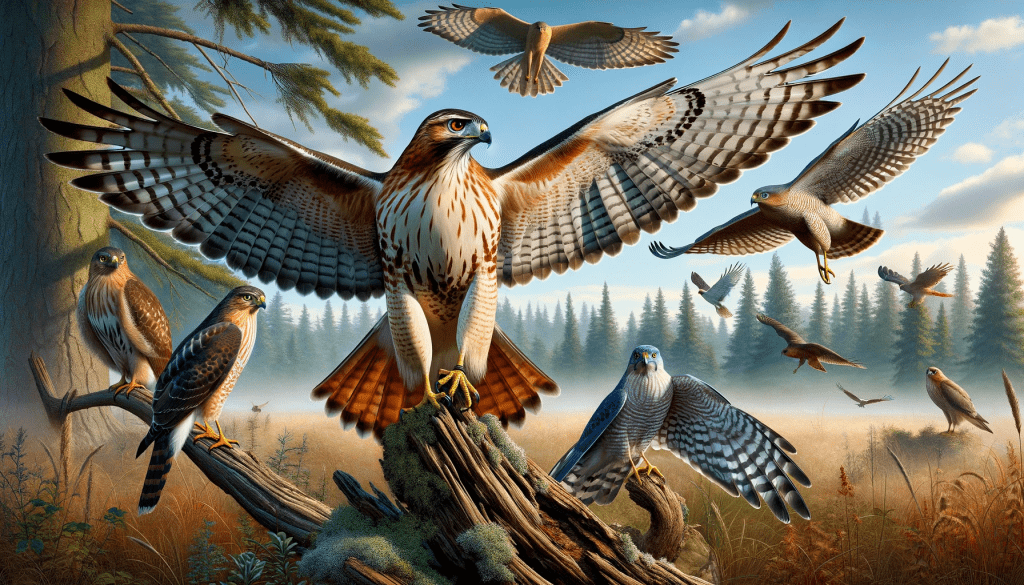
Broad-Winged Hawk
The Broad-Winged Hawk is a relatively small species of hawk, known for its long-distance migrations in massive groups.
Traits That Identify Broad-Winged Hawk
Broad-winged Hawks are compact with broad wings and a short tail. You can recognize them by their reddish-brown heads, barred underparts, and uniformly dark wings, except for a pale band along the wingtip.
Habitat Details of Broad-Winged Hawk
These hawks inhabit deep deciduous and mixed woodlands, particularly around water bodies. Their range stretches from Southern Canada, across the Eastern and Midwestern United States, and they migrate to Central and South America in winters.
What Broad-Winged Hawk Preys Upon
These hawks primarily feed on small mammals like rodents, and occasionally on small snakes, amphibians, and insects. They are perch hunters, watching for prey from a high perch and swooping down to capture it.
Sparrowhawk
The Sparrowhawk, not to be confused with the Eurasian Sparrowhawk, refers to the American Kestrel in North America. It’s the smallest and most colorful falcon in North America.
Spotting a Sparrowhawk: Key Features
These small hunters possess a rust-red back, wings, and tail, and a streaked, pale underside. The males have slate-blue wings that differentiate them from the females.
Where Sparrowhawks Reside
American Kestrel or Sparrowhawks are habitat generalists and can thrive in many environments from alpine meadows, deserts, grasslands to open woodlands and city parks across North America.
The Diet of a Sparrowhawk
Their diet is diverse, including insects, small mammals like shrew and mice, as well as small birds and reptiles. These are seen hovering in the air before diving onto their prey.



Swainson’s Hawk
Named after the British naturalist William Swainson, the Swainson’s Hawk is a large, long-winged species known for its impressive migrations.
Identifying Marks of Swainson’s Hawk
You can recognize this hawk by its dark chestnut upperparts, pale underparts, and a dark brown bib on the chest. The wings are considerably long, giving it a unique, stretched, ‘hand-like’ appearance in flight.
Residential Areas of Swainson’s Hawk
Swainson’s Hawks are inhabitants of open fields and prairies across western and central North America, migrating in large numbers to southern South America during winters.
Swainson’s Hawk’s Preferred Prey
Their diet primarily consists of insects, particularly locusts and grasshoppers, small mammals, and birds. They are known for their ground hunting behavior, walking on the ground to catch insects.
Ferruginous Hawk
The Ferruginous Hawk, North America’s largest hawk species, is known for the rusty color on its back and wings and the feathered legs.
Physical Indicators of Ferruginous Hawk
They possess a pale head and neck that contrast with their reddish-brown back and wings. The wings are extremely wide and rounded, with a distinctive gray patch at the base of the primary feathers.
Ferruginous Hawk Habitats
They predominantly reside in the open country of western North America like prairies, plains, desert scrublands, making their nests on cliff edges or atop trees.
Common Prey of Ferruginous Hawk
The diet of this hawk primarily includes rodents, rabbits, ground squirrels. Unique among North American hawks, they will also eat insects, and rarely, birds.



Rough-Legged Hawk
The Rough-Legged Hawks are named for their feathered legs and are one among the three American raptor species that have feathers extending down to their ankles.
Characteristics Defining Rough-Legged Hawk
These hawks display a range of plumage, including light and dark morphs. But the most common is the light morph, which features a dark patch at the wrist of the wing and a dark belly-band.
Where to Find Rough-Legged Hawk
The Rough-Legged Hawk is an Arctic bird, nesting in the high Arctic tundra. In winters, they migrate southwards to open habitats in North America such as fields, farmlands, and marshes.
Rough-Legged Hawk’s Dietary Choices
Primarily, they feed on small to medium-sized mammals such as voles, lemmings, ground squirrels. These hovers above the ground in search of prey before swooping down to catch it.
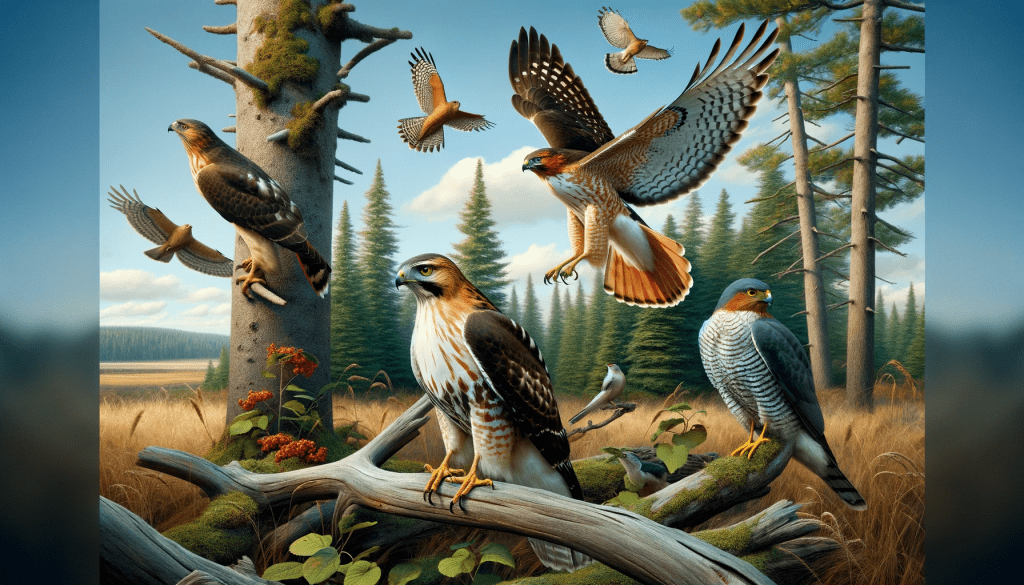
Red-Shouldered Hawk
The Red-Shouldered hawk is a medium-sized hawk, known for its distinctively loud, repeated calls.
Key Identification Features of Red-Shouldered Hawk
They have a rich chestnut breast, barred with white and a distinctively marked red “shoulder” on the upper wing. Their tail is black with narrow white bands.
Habitation Information on Red-Shouldered Hawk
This hawk dwells mostly in woodlands and deciduous forests across Eastern and Pacific North America. They are often found in river forests and swamps, nesting in tall trees near water bodies.
What Red-Shouldered Hawk Eats
Their diet includes a variety of small mammals, amphibians, and reptiles, with a special preference for small rodents and frogs. They are often seen perching and waiting patiently for prey to appear.
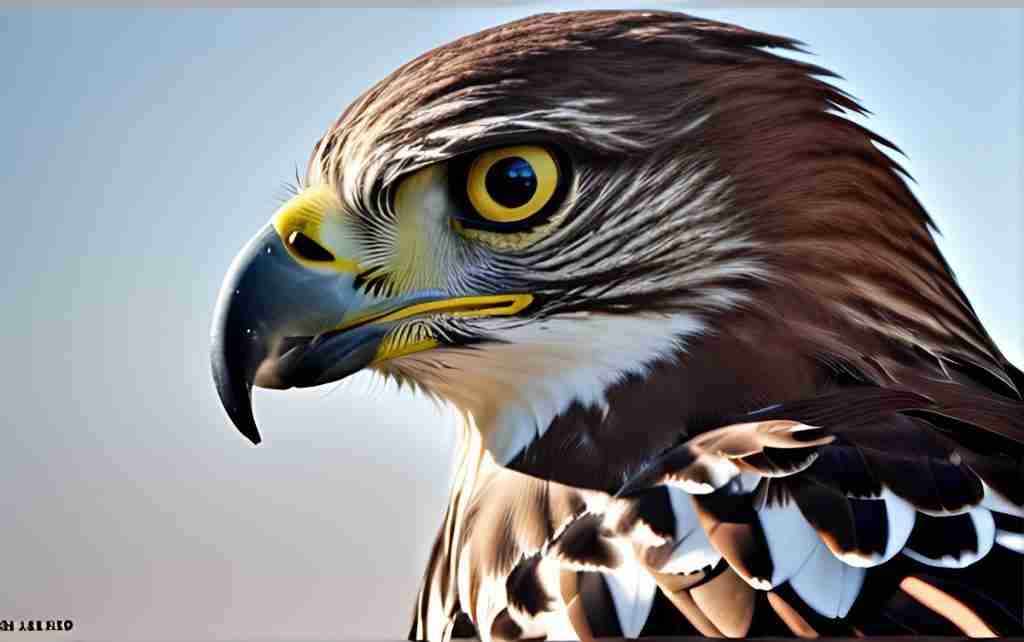
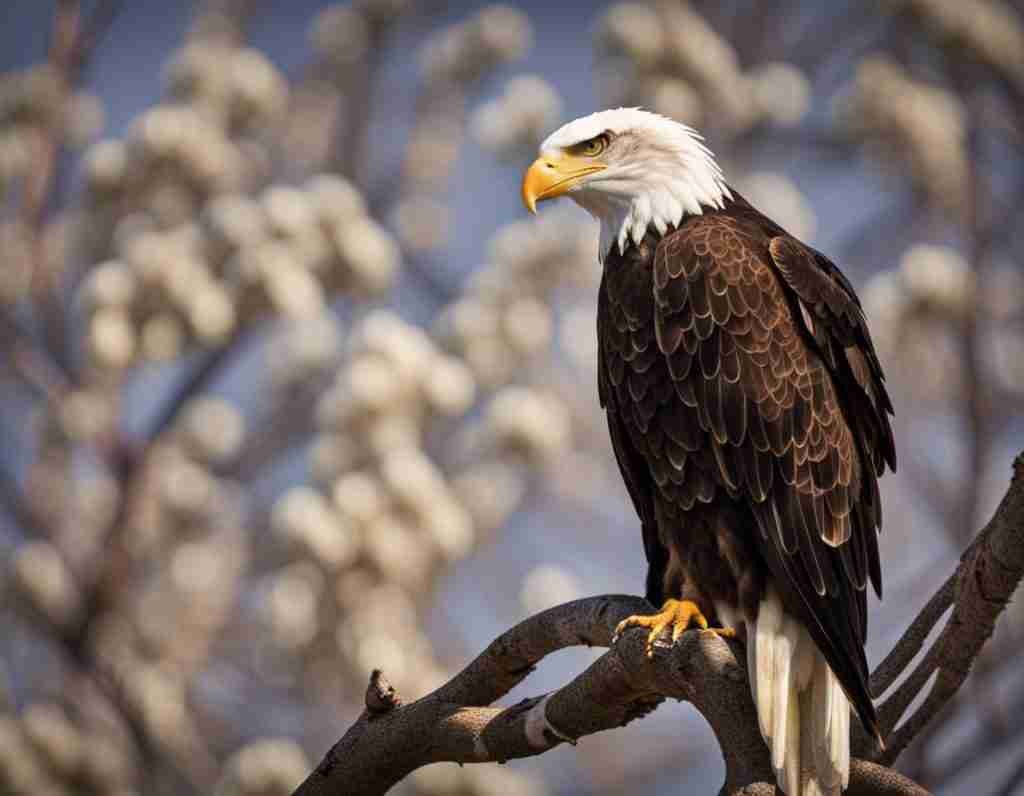
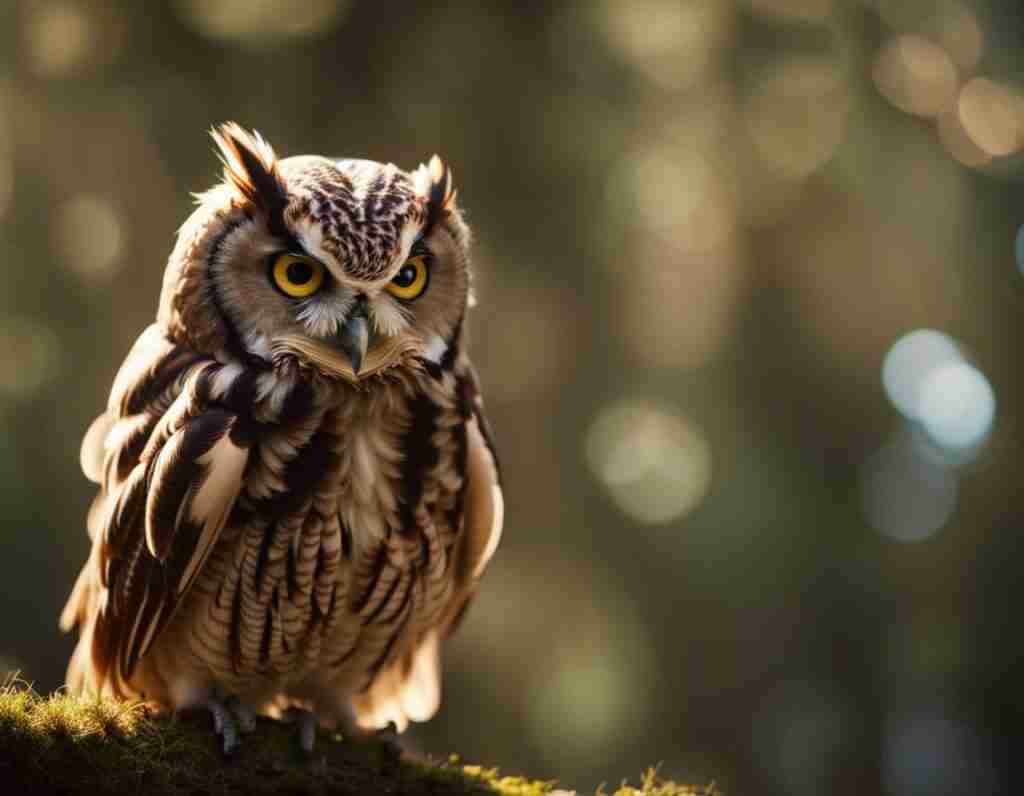
Pingback: A Guide to Sparrow Identification